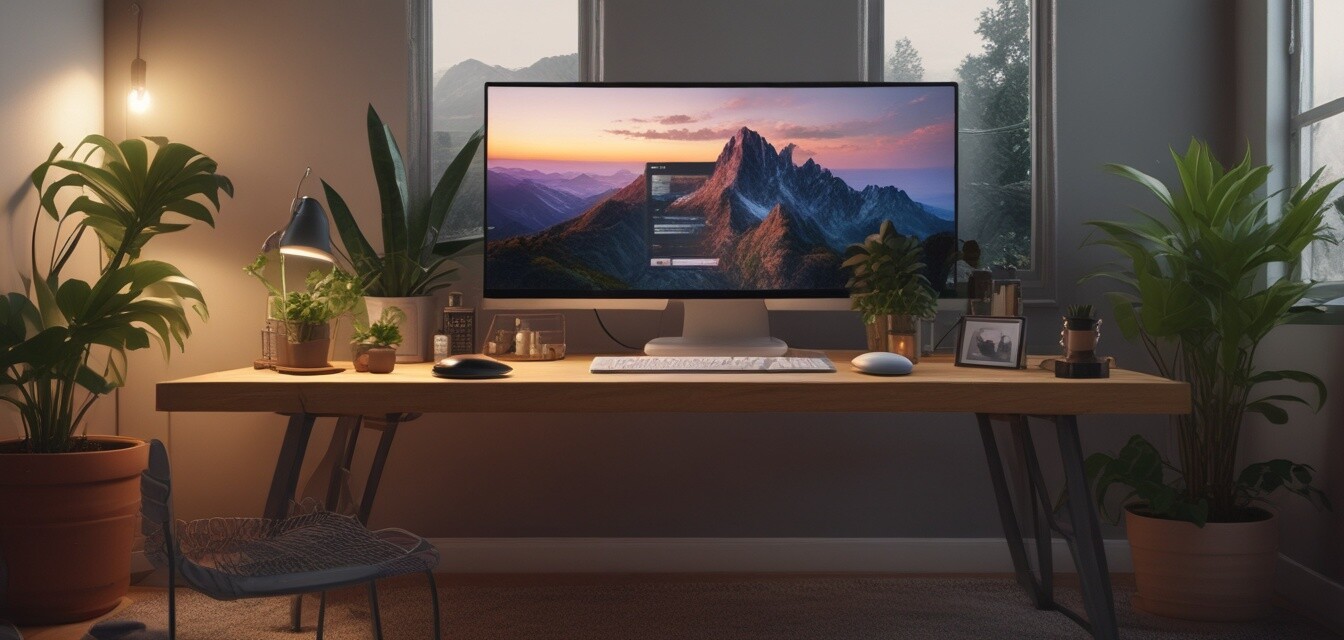
Choosing the Right Monitor Setup for Productivity
Key Takeaways
- Understand the different monitor sizes and resolutions that best fit your workspace.
- Explore single vs. multi-monitor setups to find what enhances your efficiency.
- Consider ergonomic setups to reduce strain and boost productivity.
- Choose the right accessories and features for your specific tasks.
- Don’t forget about connectivity options and desk space management.
Creating the perfect monitor setup in your home office can significantly enhance your productivity. Whether you're a remote worker, a student, or involved in freelance projects, the right monitor can make all the difference. This guide will help you understand the key considerations in selecting the best monitor setup for your needs.
Types of monitor setups
Single monitor setups
A single monitor is often the easiest and most cost-effective setup. It's suitable for those who might not need a lot of screen space or prefer a minimalist approach.
Multi-monitor setups
Multi-monitor setups have become increasingly popular among professionals, especially for tasks that require multitasking or comparison of various information. Here’s a quick comparison:
| Setup Type | Advantages | Considerations |
|---|---|---|
| Single Monitor |
|
|
| Multi-Monitor |
|
|
Considerations when choosing monitors
Size and Resolution
When it comes to monitor size, think about your desk space and how far you will sit from the screen. Sizes typically range from 21 inches to 34 inches, with various resolution options from Full HD (1920 x 1080) to 4K (3840 x 2160). Higher resolution monitors provide sharper images, which is beneficial for detailed work.
Aspect Ratio
The aspect ratio of a monitor can impact your experience. A standard 16:9 aspect ratio is common, but ultrawide monitors (21:9 or 32:9) are excellent for multitasking and can replace a dual monitor setup. Evaluate your workflow needs when choosing an aspect ratio.
Ergonomics and Adjustability
Monitor height and tilt adjustment features can greatly improve comfort and productivity. Look for monitors that allow you to adjust height, brightness, and tilt to find the most comfortable viewing angles.
Accessories and Features
Cables and Connectivity
Ensure that the monitors you choose have the necessary ports (HDMI, DisplayPort, USB-C) to connect to your devices. Additionally, consider investing in a good quality cable that supports high refresh rates and resolutions.
Monitor Stands and Mounts
A good stand can save space and help organize your desk. Monitor arms can provide more flexibility, allowing for more screen adjustments and freeing up desk space.
Consider your workspace
Before you finalize your choice, think about the layout of your workspace. You may want to explore the office furniture category for optimal desk arrangements, and ensure your setup compliments the space you’re working in.
Tips for optimizing your monitor setup
Tips for beginners
- Start with one monitor; expand as necessary based on your work needs.
- Position your monitor at eye level to avoid neck strain.
- Use desktop organizers to keep your workspace tidy.
- Consider a blue light filter to reduce eye strain during long work hours.
Pros
- Improves productivity with better task management.
- Enhanced clarity and detail for visual work.
- Customizable to fit individual preferences and tasks.
Cons
- Can be more expensive, especially for high-end models.
- Takes up more desk space and requires cable management.
- Potential for distraction with multiple screens.
Conclusion
Choosing the right monitor setup for your home office is crucial for enhancing productivity. Whether opting for a single monitor or multiple screens, understanding your workspace, the types of tasks you perform, and ergonomic principles can lead to significant improvements in your workflow.
Further exploration
For more tips on creating the best workspace, feel free to check out our Setup Inspiration category or browse through our in-depth Buying Guides on various office equipment.